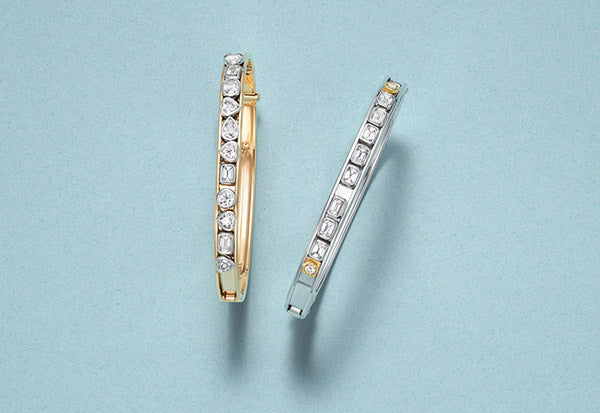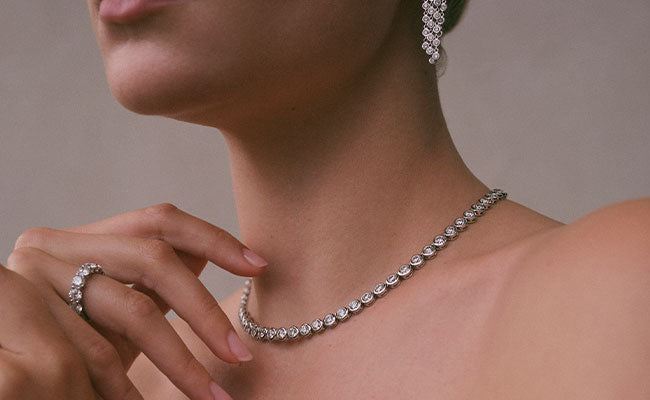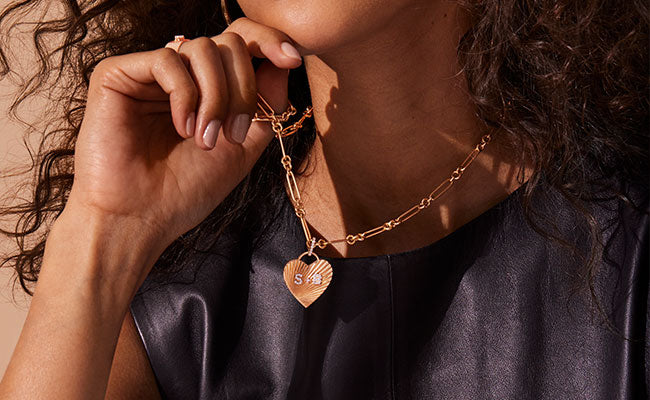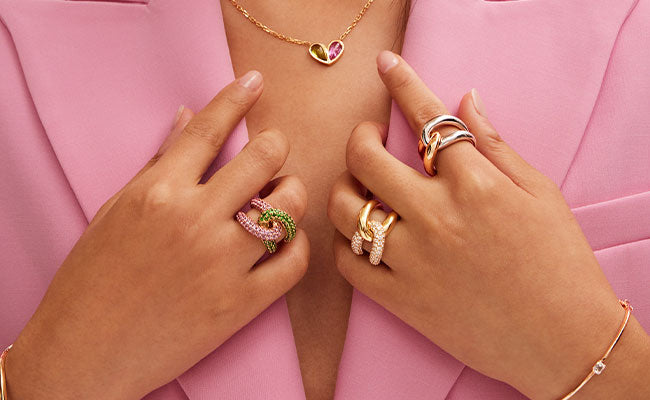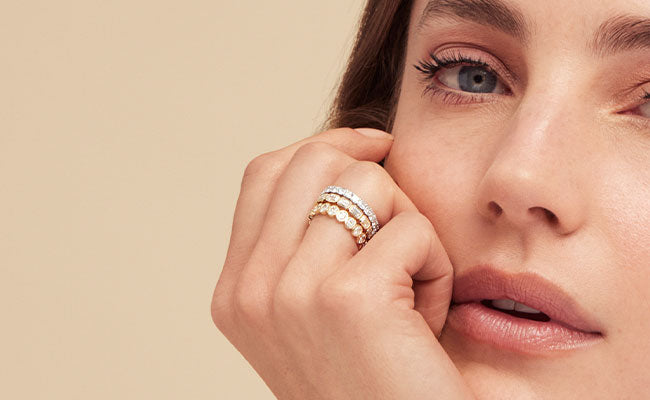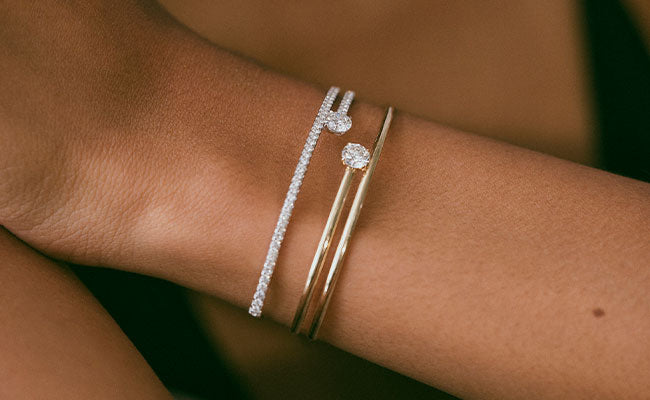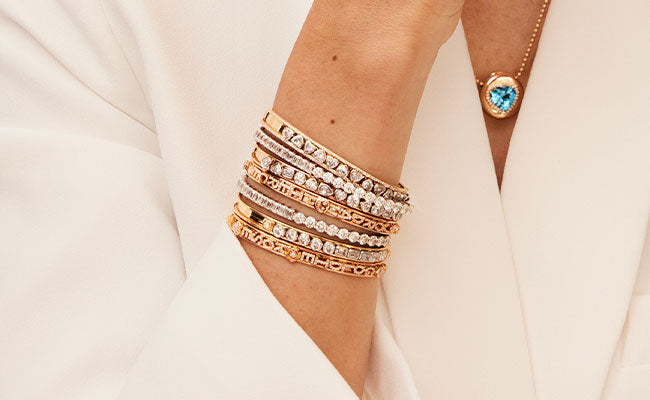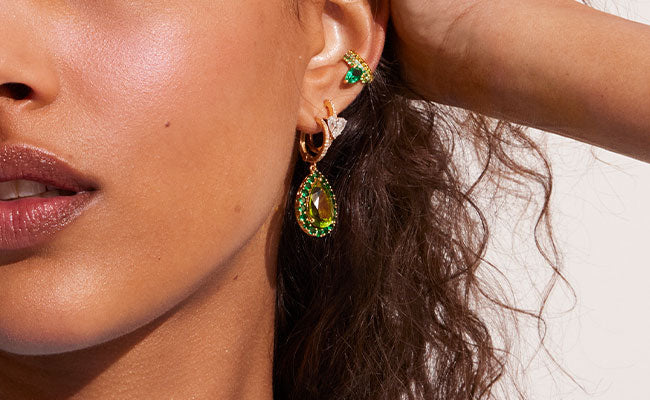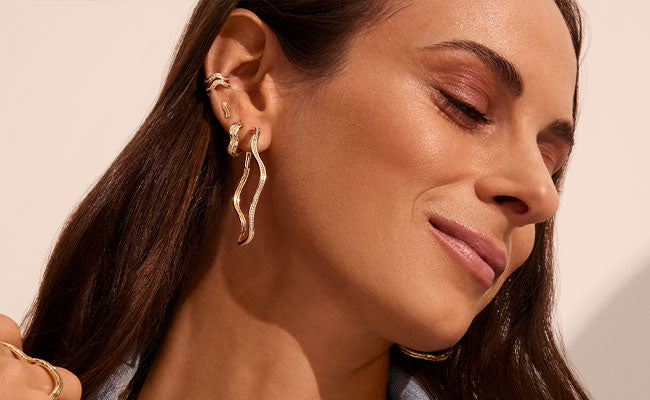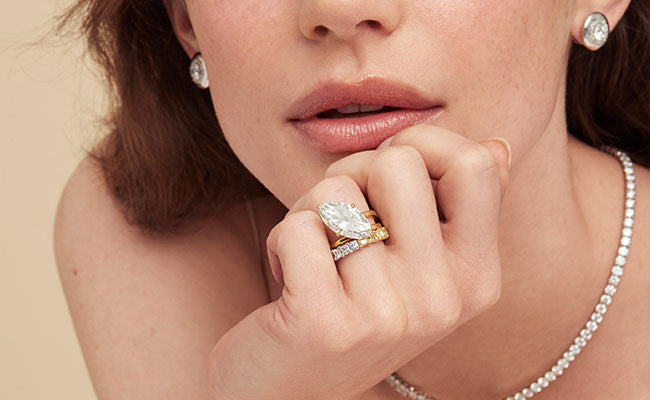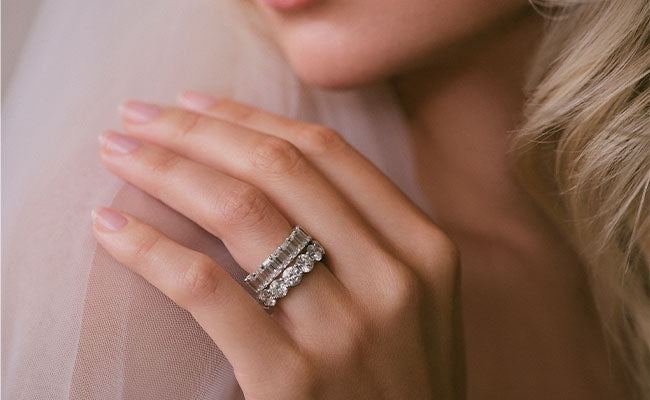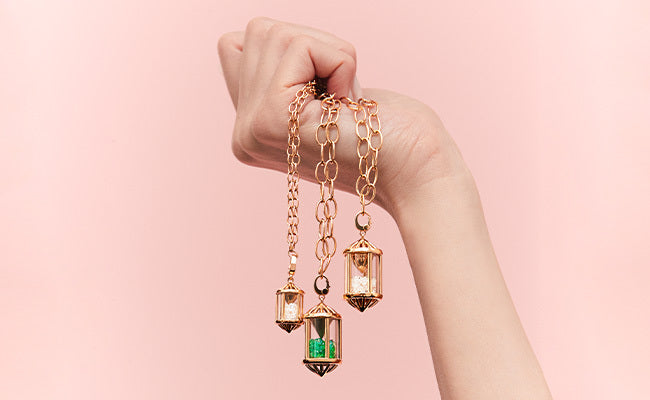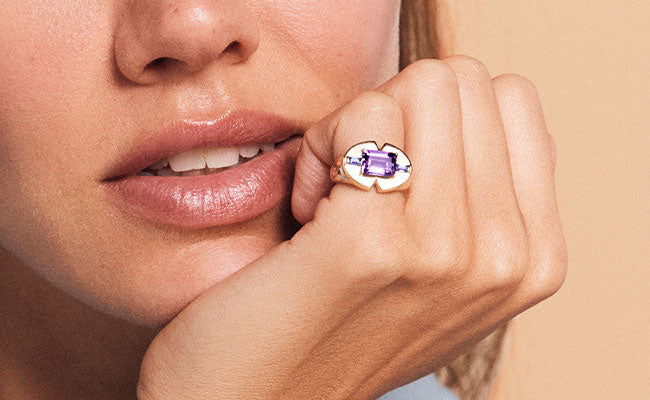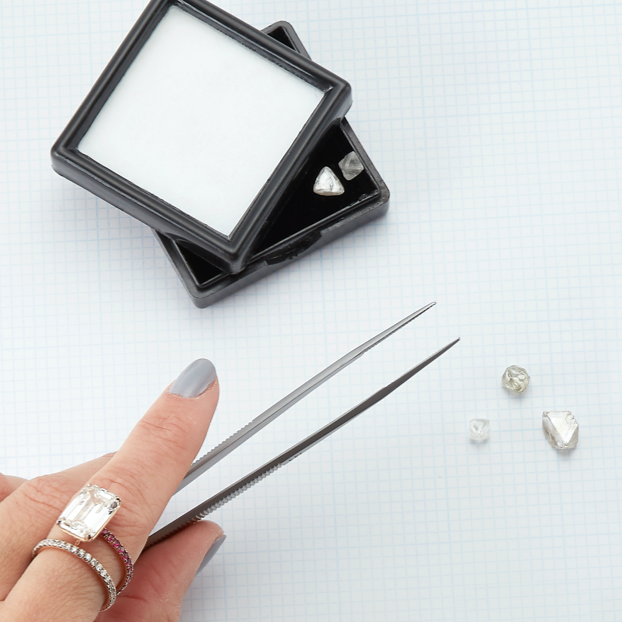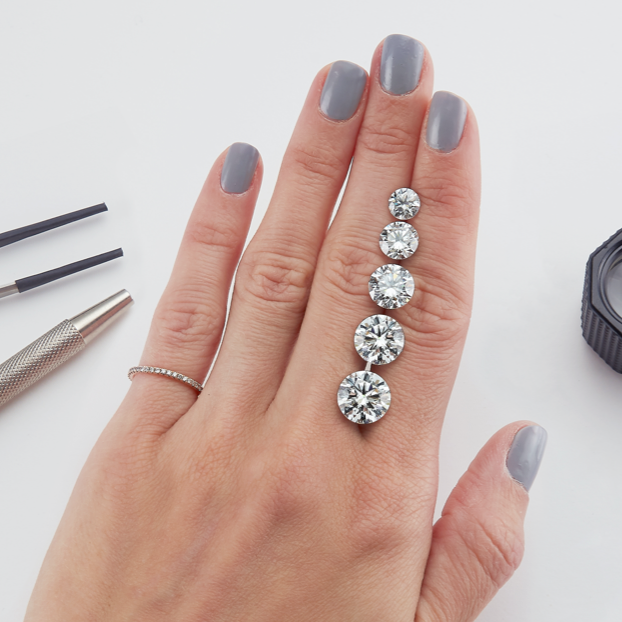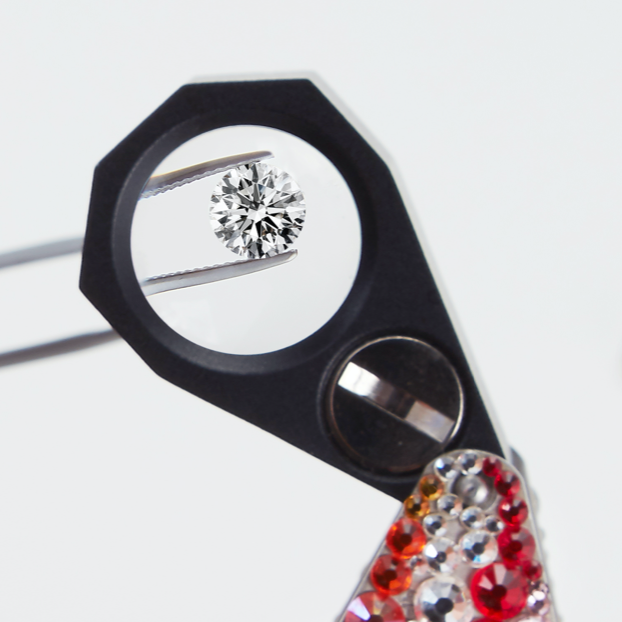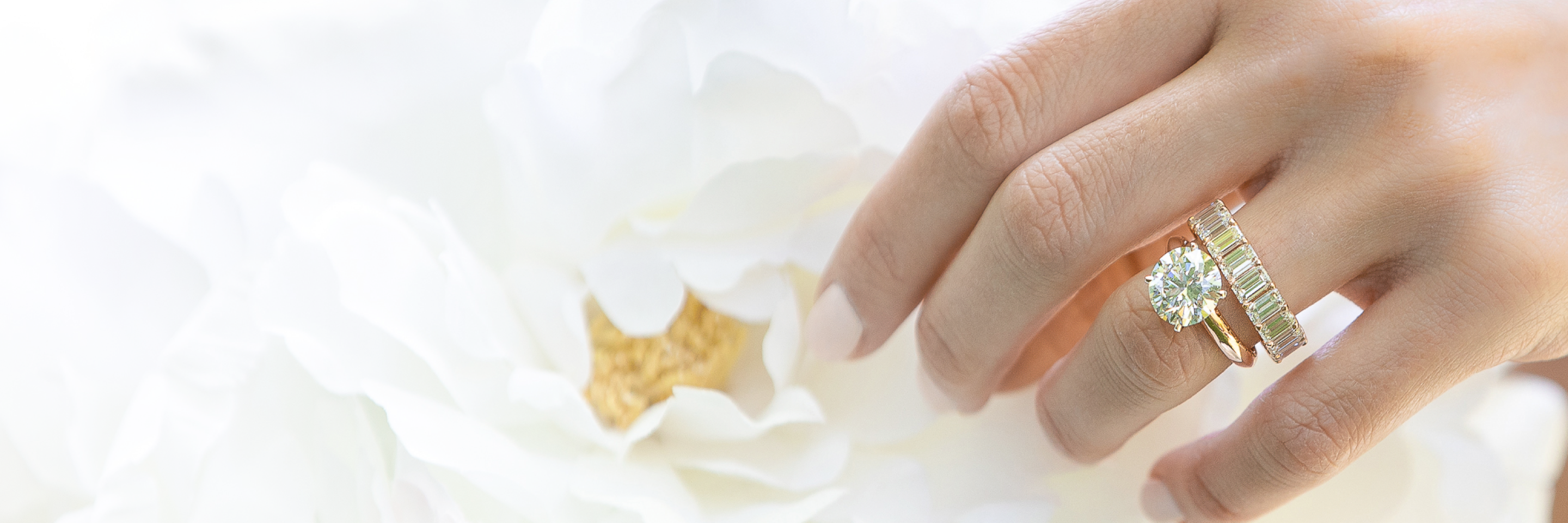The Cut is comprised of several measurements of a diamond’s proportions, arrangement and alignment of the facets, and quality of the polish, which all determine how the facets interact with light.

Color
Color is generally considered the second most important attribute when selecting a diamond. This is because it’s usually the most noticeable characteristic, aside from size. A diamond’s color grade refers to the presence or lack of “tint” in the diamond. In a white diamond, this would be a presence or lack of yellow.
The Gemological Institute of America (GIA) grades diamond color on a scale from D to Z. While most diamonds appear to have no color to the untrained eye, most stones usually contain slight tones of yellow. The rule of thumb is that you need to jump two color grades to see a noticeable difference in color.

Diamonds in the D-to-F range are considered “Colorless”; these stones are the most rare, and therefore the most valuable.
Diamonds in the G-to-H range are considered “Near Colorless” and can offer more “value” with regards to pricing.
Diamonds in the I-to-J range are defined by having “Noticeable Color”. This is definitely subjective, and stone-specific.
For most shapes, we consider J to be the cutoff before yellow is “too noticeable”. Some shapes are better at hiding color than others; for example the Round and Emerald camouflage color much better than a Cushion, Pear, or Oval would.
Note: Colored diamonds (other than yellow) are valued gemstones. These diamonds have a distinct color grading system from “white” diamonds.

